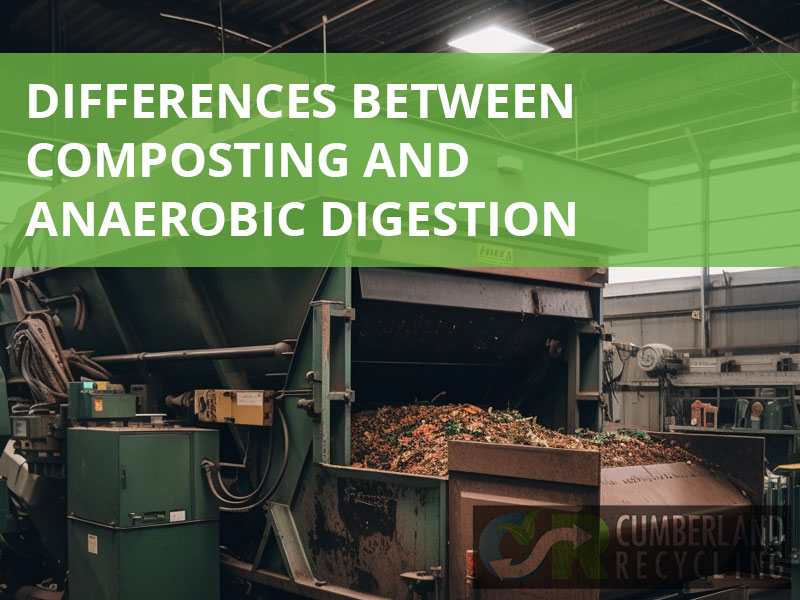Businesses are understandably concerned with the environment. Consumers increasingly are demanding accountability from the brands they buy. A big part of this concern and focus is on how to properly handle all of the waste generated by our consumer-driven society. Businesses are asking themselves how they can be part of the solution. Responding to this question is the very reason Cumberland Recycling came into being. We are in business to assist buyers and sellers in improving their environmental performance, which helps our world while creating value for them.
Two of the methods that are used in recycling organic wastes of different kinds are composting and anaerobic digestion. Both of these are very effective but in very different ways. You might be wondering what the differences are between composting and anaerobic digestion. Below you will find descriptions of each, an explanation of how they work, and what they are used to produce.
Composting. Most of us are familiar with composting. It’s a process that speeds up the natural decay of organic materials, such as food and plant matter, by giving the organisms that consume these materials the perfect conditions to live in. The end result of this process is soil that is nutrient-rich and can be used to help plants and trees grow.
Micro-organisms are vital to composting, but they aren’t hard to find. They are already everywhere in our environment. The key to proper composting is going to be to provide these creatures with the correct balance of, nutrients, moisture, and plenty of oxygen to encourage their growth.
Anaerobic Digestion. Anaerobic digestion is a series of processes in which micro-organisms break down biodegradable material where there is no oxygen. This technology includes a range of methods that converts materials such as manure from livestock, municipal wastewater solids, food waste, industrial wastewater, oils, fats, and grease into biogas. This biogas is collected and processed, then combusted to produce energy, including heat, electricity, transportation fuels, and more.
There are both a wet and a dry method of anaerobic digestion. The wet version is when food processing waste or animal manure are placed in a chamber that is closed and under temperatures between 90 to 140 degrees Fahrenheit. The length of time in the vessel is generally between three to four weeks. Fermentation microorganisms will occur naturally under these conditions. And they will go to work breaking down all organic solids to produce the biogas (made up mostly of methane and carbon dioxide). Dry anaerobic digestion works much the same but is more efficient in handling feedstocks with lower moisture content, such as yard waste or table scraps.
Cumberland Recycling Company is a management services organization that provides customized waste and recycling solutions for the manufacturing and processing business community. We accomplish this through our sourcing guidance, revenue capture, optimized transportation and logistics, and equipment and vendor management.

